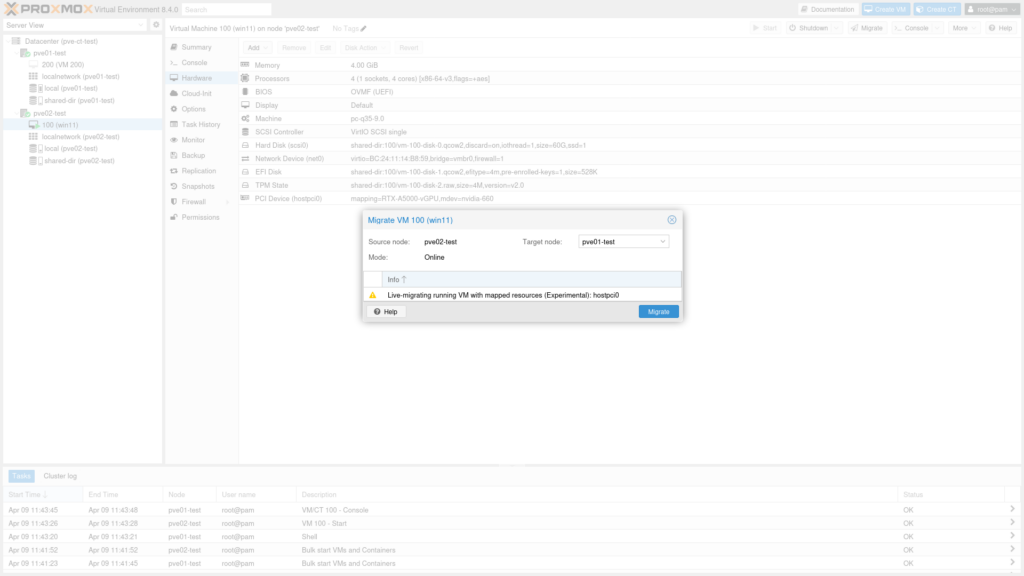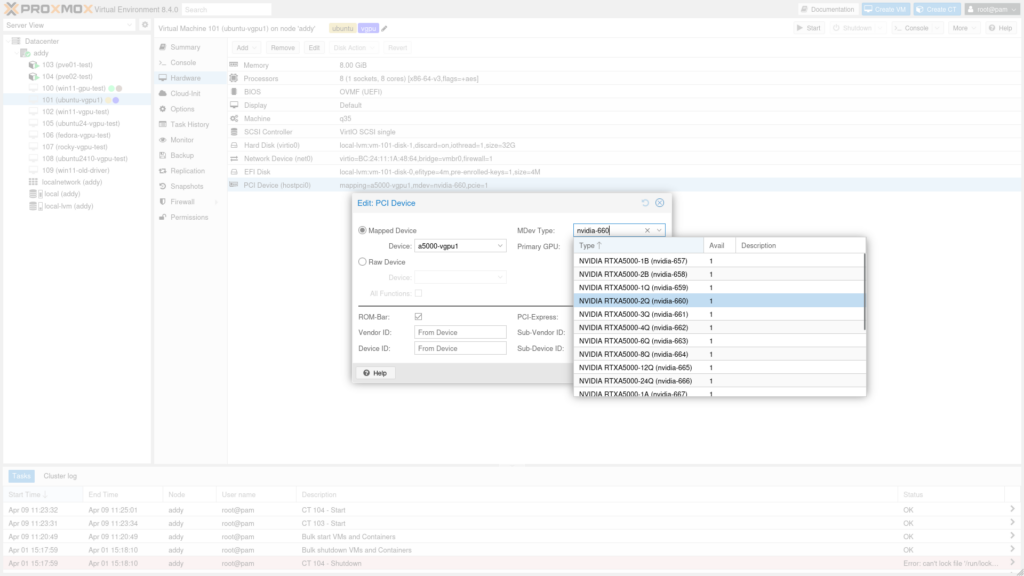Proxmox VE 8.4 adds live vGPU migration, third-party backup API, virtiofs sharing, and updated core components for modern IT.
Proxmox has released version 8.4 of its Virtual Environment (VE) platform—a widely used open-source tool for managing virtual machines and containers. This update introduces several key enhancements designed to improve usability, performance, and compatibility with modern infrastructure.
Proxmox VE 8.4 Features
Highlighted in Proxmox VE 8.4 is support for live migration of virtual machines using mediated devices—hardware that’s shared across multiple virtual machines, such as NVIDIA’s vGPU. Previously, migrating a VM with a mediated device wasn’t possible without downtime. Now, provided the target node has compatible hardware and driver support, you can migrate these VMs live without interruption in service. A new utility, pve-nvidia-vgpu-helper, also helps streamline the setup of NVIDIA vGPU drivers.
Another significant addition is a new API designed explicitly for third-party backup tools. This opens the door for external providers to tightly integrate with the Proxmox VE backup and restore system. Not only can they plug into the native web interface, but they can also build on Proxmox’s existing backup stack to offer improved performance and customization for enterprise environments.
File sharing between the host and guest systems gets a big boost with the introduction of virtiofs directory passthrough. This feature allows virtual machines to access host directories as if they were local, bypassing the overhead of traditional network file sharing. Linux VMs support virtiofs natively, while Windows systems need additional configuration.
As always, Proxmox has kept its foundations up to date. This version is built on Debian 12.10 (“Bookworm”) and includes Linux kernel 6.8.12 (default) and 6.14 (optional). It also brings in newer versions of key components like:
- QEMU 9.2.0
- LXC 6.0.0
- ZFS 2.2.7 (with patches for kernel 6.14)
- Ceph Squid 19.2.1 (as the stable storage backend)
Other notable improvements of Proxmox VE 8.4 include:
- Better performance and reliability in backup deduplication (referred to as backup “fleecing”)
- Updates to the SDN (software-defined networking) stack
- New configuration options in the ISO installer to fine-tune installations
Proxmox VE 8.4 Availability and Access
Proxmox VE 8.4 can be downloaded directly as an ISO image and installed on bare-metal systems. Existing installations can be upgraded using apt, or users can install Proxmox VE on top of a clean Debian 12.10 setup. It remains free and open-source, distributed under the GNU Affero General Public License v3 as with previous versions.
Proxmox offers subscription plans starting at €115 per CPU per year for enterprise users looking for support. The plans include access to a stable Enterprise Repository and technical assistance through the Proxmox support network.
Full release notes of version 8.4 can be found on the official Proxmox documentation page.
Proxmox Virtual Environment (VE)
Engage with StorageReview
Newsletter | YouTube | Podcast iTunes/Spotify | Instagram | Twitter | TikTok | RSS Feed


